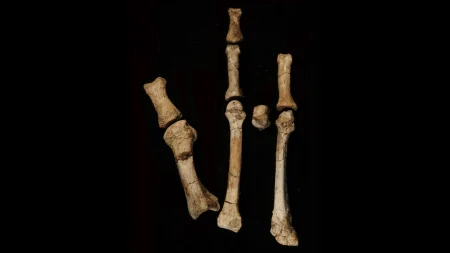The Complex Relationship Between Alcohol and Society: From Evolution to Public Health
The Evolution of Alcohol in Human Society
Human relationship with alcohol dates back to the dawn of civilization, potentially playing a significant role in our social evolution. According to a 2025 study by Hrnčíř, Chira, and Gray published in Humanities & Social Sciences Communications, alcohol may have facilitated the development of complex societies. This perspective is further explored in Edward Slingerland’s 2021 book “Drunk: How We Sipped, Danced and Stumbled Our Way to Civilization,” which argues that alcohol consumption helped early humans build social connections and establish trust—essential elements for developing larger social groups beyond immediate family units. This evolutionary relationship is even reflected in our genetics; a 2010 study in BMC Evolutionary Biology by Peng and colleagues identified the ADH1B gene variant that emerged around the same time as rice domestication in East Asia, suggesting humans have been adapting biologically to alcohol for thousands of years. These evolutionary connections help explain alcohol’s persistent role in human culture despite its potential health risks—it appears deeply woven into our social fabric and possibly even our development as a species.
Changing Patterns of Alcohol Consumption in Modern Times
Recent data indicates significant shifts in alcohol consumption patterns, particularly in the United States. According to a 2025 Gallup poll conducted by L. Said, American drinking rates have reached an all-time low as concerns about alcohol’s health effects continue to grow. This trend is especially pronounced among younger generations, who are increasingly questioning traditional drinking norms. A 2025 study in Alcohol Clinical and Experimental Research by Creswell, Arterberry, and Patrick tracked historical trends in young adult solitary alcohol use from 1977 to 2022, finding notable changes in consumption patterns across generations. The COVID-19 pandemic created its own distinct impact on drinking behaviors, as documented in a critical review by Merlo and colleagues in the March 2025 issue of Human Psychopharmacology. Their research revealed that while some populations increased their alcohol consumption during pandemic lockdowns—using alcohol as a coping mechanism for isolation and stress—others reduced their intake due to limited social opportunities and growing health consciousness. These changing patterns reflect broader societal shifts in how we view alcohol, balancing its cultural significance against growing awareness of its health implications.
The Health Consequences of Alcohol Consumption
The health implications of alcohol consumption have become increasingly clear in recent years, with mounting evidence suggesting significant risks. A landmark study by Topiwala and colleagues, published in BMJ Evidence-Based Medicine in September 2025, used multiple research methodologies—including cohort studies, case-control analyses, and Mendelian randomization—to establish a clear link between alcohol use and dementia risk across diverse populations. This comprehensive approach provided some of the strongest evidence to date on alcohol’s detrimental effects on brain health. The findings align with the World Health Organization’s unequivocal 2023 statement that “no amount of alcohol consumption is safe for our health”—a position that represents a significant shift from earlier public health messaging that sometimes suggested moderate consumption might offer benefits. Another concerning health pattern emerged from a 17-year longitudinal study published in 2022 by Creswell, Terry-McElrath, and Patrick in Drug and Alcohol Dependence, which found that solitary drinking during adolescence strongly predicts alcohol problems in adulthood. This research followed a large national sample of U.S. high school students, highlighting how certain drinking patterns established early in life can lead to problematic relationships with alcohol decades later.
The Public Health Response and Dietary Guidelines
In response to growing evidence about alcohol’s health risks, public health authorities have begun revising their guidance. The U.S. Department of Agriculture and Department of Health and Human Services’ Dietary Guidelines for Americans (2020-2025) maintained their recommendation that if adults choose to drink, they should limit intake to two drinks or less per day for men and one drink or less for day for women. However, these guidelines now place greater emphasis on the fact that drinking less is better for health than drinking more, and they explicitly state that not drinking alcohol is the healthiest choice. This represents a subtle but important shift toward more cautious messaging compared to previous iterations that sometimes highlighted potential cardiovascular benefits of moderate drinking—benefits that more recent research has called into question. The World Health Organization has taken an even stronger stance, as mentioned earlier, declaring no safe level of alcohol consumption exists. These evolving guidelines reflect the scientific community’s growing consensus that alcohol poses significant health risks even at levels previously considered moderate, creating challenges for public health communication as authorities work to balance factual information about risks with respect for individual choices and cultural practices around alcohol.
Cultural Significance Versus Health Concerns
Society now faces a complex tension between alcohol’s deep cultural significance and its well-documented health risks. For thousands of years, alcoholic beverages have been central to religious ceremonies, celebrations, and social bonding across diverse cultures. Slingerland’s anthropological research suggests these practices weren’t merely recreational but potentially instrumental in humanity’s ability to form large-scale cooperative societies. The study by Hrnčíř and colleagues further explores how alcohol may have served as a “social lubricant” that helped strangers build trust and form communities beyond immediate kin. Yet these cultural benefits now exist in stark contrast to our scientific understanding of alcohol’s health impacts. The 2025 BMJ study by Topiwala and team provides compelling evidence of alcohol’s contribution to dementia risk, while other research has established links to cancer, liver disease, and numerous other health problems. This creates a profound societal dilemma: how to acknowledge alcohol’s historical and cultural significance while honestly addressing its health consequences. Different cultures and individuals are navigating this tension in various ways, with some maintaining traditional drinking practices while others are reevaluating their relationship with alcohol in light of health concerns.
Future Directions in Alcohol Research and Policy
As we look toward the future, both alcohol research and policy continue to evolve in response to emerging evidence and changing societal attitudes. Researchers are increasingly employing sophisticated methodologies—like the Mendelian randomization techniques used in Topiwala’s 2025 study—that provide stronger causal evidence about alcohol’s health effects than was previously possible. Scientists are also developing more nuanced understandings of how different patterns of consumption (such as solitary versus social drinking) may have distinct health and psychological outcomes, as demonstrated by Creswell’s longitudinal research. Meanwhile, public health policies are gradually shifting toward more precautionary approaches, though often still stopping short of the World Health Organization’s strong position against any alcohol consumption. The declining drinking rates reported by Gallup in 2025 suggest these messages may be influencing public behavior, particularly among younger generations. Looking ahead, society faces important questions about how to develop policies and cultural practices that acknowledge alcohol’s complex role in human history while prioritizing public health. Future approaches will likely need to balance respect for individual autonomy and cultural traditions with honest information about risks, while also addressing factors that contribute to problematic drinking patterns, particularly among vulnerable populations. This evolving relationship between humans and alcohol continues to be shaped by our growing scientific understanding, cultural values, and public health priorities.















